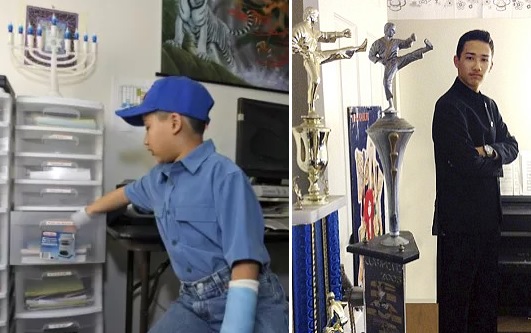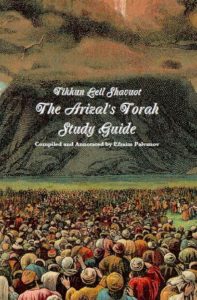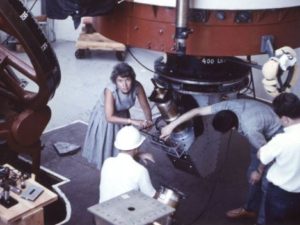NASA’s First Jewish Astronaut
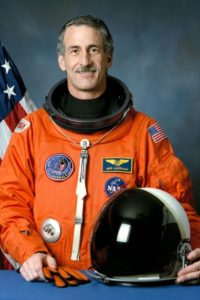 Jeffrey Alan Hoffman (b. 1944) was born in Brooklyn. He was always fascinated by outer space, and went to study astronomy at Amherst College in Massachusetts. Hoffman went on to get a PhD in astrophysics from Harvard, researching cosmic x-rays and gamma rays. He built one of the first aerial gamma ray telescopes. After this, he did postdoctoral work in the UK, eventually working as a project scientist for the European Space Agency. In 1975, Hoffman returned to the US to work at MIT. His main area of focus was x-ray bursts, and he authored over 20 papers on the subject, becoming the world expert on it. One time, he heard his wife reading a passage in a book saying that there will never be a Jewish astronaut. This inspired Hoffman to pursue just that, and he applied to NASA. In 1978, he was selected for NASA’s astronaut training program, together with Judith Resnik. The two became NASA’s first Jewish astronauts. Hoffman went on his first mission in 1985 aboard the Space Shuttle Discovery, during which the crew deployed two satellites and conducted numerous scientific experiments. At this point, Hoffman became just the second Jewish man in space (following Russian cosmonaut Boris Volynov). During his fourth trip to space, Hoffman was responsible for repairing the Hubble Space Telescope. Before that flight, his rabbi asked him if he would take some Judaica with him, and Hoffman happily agreed. He took a mezuzah—which he affixed to his cabin with Velcro—a tallit, as well as a dreidel and mobile menorah, since it was during Chanukah. (Click here to see Hoffman spin a dreidel in space!) On another flight, Hoffman took a Torah with him and made sure to read it while flying over Jerusalem. During his last mission in 1996, Hoffman set a new record, becoming the first astronaut to spend 1000 hours aboard space shuttles. All in all, he spent more than 50 days in space, and logged over 21 million space miles travelled. Since retiring as an astronaut, he has been teaching as a professor at MIT, and visiting professor at the University of Leicester. He has also written a book called An Astronaut’s Diary.
Jeffrey Alan Hoffman (b. 1944) was born in Brooklyn. He was always fascinated by outer space, and went to study astronomy at Amherst College in Massachusetts. Hoffman went on to get a PhD in astrophysics from Harvard, researching cosmic x-rays and gamma rays. He built one of the first aerial gamma ray telescopes. After this, he did postdoctoral work in the UK, eventually working as a project scientist for the European Space Agency. In 1975, Hoffman returned to the US to work at MIT. His main area of focus was x-ray bursts, and he authored over 20 papers on the subject, becoming the world expert on it. One time, he heard his wife reading a passage in a book saying that there will never be a Jewish astronaut. This inspired Hoffman to pursue just that, and he applied to NASA. In 1978, he was selected for NASA’s astronaut training program, together with Judith Resnik. The two became NASA’s first Jewish astronauts. Hoffman went on his first mission in 1985 aboard the Space Shuttle Discovery, during which the crew deployed two satellites and conducted numerous scientific experiments. At this point, Hoffman became just the second Jewish man in space (following Russian cosmonaut Boris Volynov). During his fourth trip to space, Hoffman was responsible for repairing the Hubble Space Telescope. Before that flight, his rabbi asked him if he would take some Judaica with him, and Hoffman happily agreed. He took a mezuzah—which he affixed to his cabin with Velcro—a tallit, as well as a dreidel and mobile menorah, since it was during Chanukah. (Click here to see Hoffman spin a dreidel in space!) On another flight, Hoffman took a Torah with him and made sure to read it while flying over Jerusalem. During his last mission in 1996, Hoffman set a new record, becoming the first astronaut to spend 1000 hours aboard space shuttles. All in all, he spent more than 50 days in space, and logged over 21 million space miles travelled. Since retiring as an astronaut, he has been teaching as a professor at MIT, and visiting professor at the University of Leicester. He has also written a book called An Astronaut’s Diary.
When Jews and Greeks Were Brothers: The Untold Story of Chanukah
Words of the Week
…Science can only be created by those who are thoroughly imbued with the aspiration toward truth and understanding. This source of feeling, however, springs from the sphere of religion.
– Albert Einstein

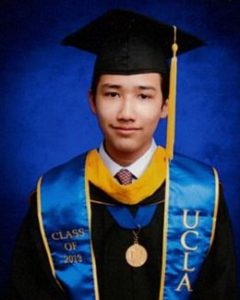 Moshe Kai Cavalin (b. 1998) was born in Los Angeles, the son of a Taiwanese mother and an Israeli-Brazilian father. He started speaking at 4 months of age, and was reading and doing math by 3. At 6, he was rejected from elementary school because he “knew more than the teacher”, and had to be home-schooled. At 8, he became the youngest person in American history to take college classes. He got his first degree three years later, with a perfect 4.0 GPA. He then enrolled at UCLA – with a full scholarship – and earned a BS in mathematics. Meanwhile, Kai wrote two bestselling books (an inspirational autobiography, and a manual to deal with bullying). For fun, he scuba dives, plays piano, and chess, and avoids video games which, he says, are “not helping humanity in any way.” He is also an avid martial artist – thanks to his father, a former IDF special forces commando – and has won 26 gold medals. Incredibly, Kai got a pilot’s license, too. This led to a phone call from NASA in 2015. NASA needed a pilot who also knew math, physics, and computer programming to develop surveillance and anti-collision technology for drones and airplanes. Kai has been at NASA ever since, working hard to keep the skies safe. He is concurrently doing his Master’s in cybersecurity, and intends to later get a Master’s in business from MIT before opening his own cybersecurity company. Kai describes himself as a religious person and often credits God with giving him the insight to solve problems. One of his professors once said: “I think most people just think he’s a genius, they believe it just comes naturally… He actually worked harder than, I think, any other student I’ve ever had.”
Moshe Kai Cavalin (b. 1998) was born in Los Angeles, the son of a Taiwanese mother and an Israeli-Brazilian father. He started speaking at 4 months of age, and was reading and doing math by 3. At 6, he was rejected from elementary school because he “knew more than the teacher”, and had to be home-schooled. At 8, he became the youngest person in American history to take college classes. He got his first degree three years later, with a perfect 4.0 GPA. He then enrolled at UCLA – with a full scholarship – and earned a BS in mathematics. Meanwhile, Kai wrote two bestselling books (an inspirational autobiography, and a manual to deal with bullying). For fun, he scuba dives, plays piano, and chess, and avoids video games which, he says, are “not helping humanity in any way.” He is also an avid martial artist – thanks to his father, a former IDF special forces commando – and has won 26 gold medals. Incredibly, Kai got a pilot’s license, too. This led to a phone call from NASA in 2015. NASA needed a pilot who also knew math, physics, and computer programming to develop surveillance and anti-collision technology for drones and airplanes. Kai has been at NASA ever since, working hard to keep the skies safe. He is concurrently doing his Master’s in cybersecurity, and intends to later get a Master’s in business from MIT before opening his own cybersecurity company. Kai describes himself as a religious person and often credits God with giving him the insight to solve problems. One of his professors once said: “I think most people just think he’s a genius, they believe it just comes naturally… He actually worked harder than, I think, any other student I’ve ever had.”